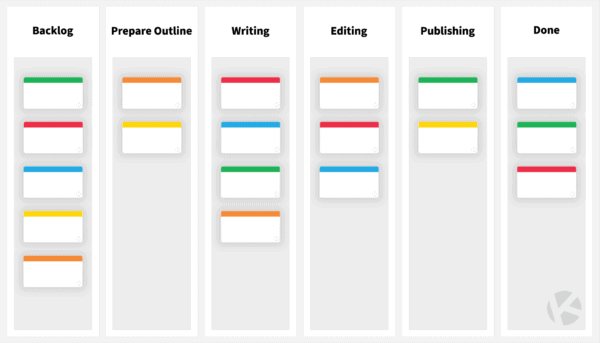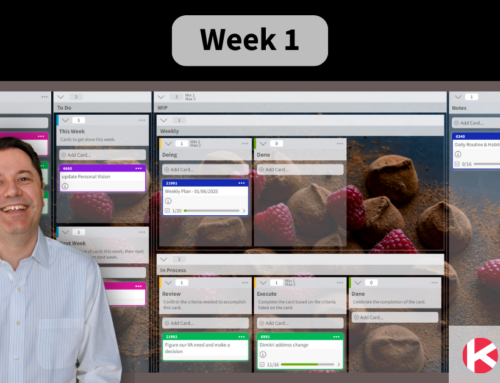
Any business who wants to thrive needs to invest in sharing information and content. Consumers look for brands they can relate with. They look for brands that care for the same advocacies they do. They want brands that display expertise and knowledge in their industries. Consumers search the Internet and dig deep into social media networks when they’re looking for a particular product, service, or its reviews. So if you’re not popping up where you should, you’re missing an opportunity to meet a customer and make business.
Content is king; as most marketers would say. Many businesses have realized this and are churning out content in multiple platforms, 24/7 to ensure they capture their target market’s attention at every possible instance. Good content helps display authority and improves brand image. Apart from generating content ideas, executing those ideas into published pieces takes hard work. And if you’re one of those business owners or marketers who’ve been wondering how you can better manage your content plan, we’ve got you covered.
In this article, we’ll discuss why you need a content calendar and how you can use Kanban to level up your content management strategy.
What is a Content Calendar?
Before we dive into what a content calendar is, let’s first discuss what exactly is considered content?
Content refers to various media. They can come in the form of blogs, press releases, infographics, social media content, videos, or podcasts, to name a few. Today, most businesses will employ different content types depending on their content marketing strategy. When it comes to creating infographics, some businesses may utilize a free infographic maker to design visually appealing and informative graphics incorporating a content model into their overall strategy.
A content calendar is a tool used to plan, schedule, and manage various content pieces published by an entity. It is sometimes called an “editorial calendar.” You plan multiple types of content in a content calendar. And this is the case for most implementations.
A content calendar typically includes the following information:
- List of topics or content angles
- List of assigned creatives – writer, graphic designer, editor, publisher, etc.
- List of platforms where the content is shared
Effective content calendars will help you:
- See what content has been published or is in the pipeline
- Easily collaborate with your team members
- Schedule and execute content-related tasks consistently
How to Use a Kanban Board to Manage Your Content Calendar
Most marketers would create their content calendars in a Google Spreadsheet. It’s easy to imagine and plot how your calendar would look like in a spreadsheet. Just pop some dates in a column and input your content ideas in cells.
But this approach can be restrictive and may hinder fluid collaboration, especially if you’re working with a content team. This approach may work to some extent or if you’re a single-person blog. But you may eventually find yourself looking for more clarity around the moving pieces in your content plan.
Kanban boards help in this area.
A Kanban board is a workflow visualization tool that teams use to manage and optimize their process. It’s rooted in the Kanban concept that first started in the Japanese automobile industry. A Kanban board is composed of stages in the form of columns. They can be broken down into workstreams by using swimlanes. A Kanban card represents each work item that the team does. Each task comes into the board as a card and it traverses the columns of the board.
When managing your content calendar, you can plot your content planning process on a Kanban board. Each content idea is then represented by a Kanban card. All these comprise your content calendar.
In the image below, we see the steps in the content planning process and the different blocks represent the Kanban cards.

How We Use Kanban to Plan our Content
At Kanban Zone, we use our own Kanban Zone boards for everything we do as a team, including content planning. We are a highly distributed team, so our Kanban board becomes our virtual office where we collaborate. It is our content calendar. Our Kanban board content calendar has a README column that documents how we use the board, who’s in the team, and other relevant links to our content strategy documents. Here are the high-level steps on our Kanban content calendar.

Step 1 – Content Ideation (Backlog)
We add cards for each content piece we want to write on. This is added to the Backlog column of our board.
Step 2 – Plan
The process starts with planning. Our SEO strategist indicates the initial details needed for each content card. After providing the information, the card transitions to Ready for Content Creation/Update.
Step 3 – Create/Update Content
This step is where the meat of the process is. Here the writers would pull cards from the Plan > Ready column and start writing content. We have dedicated columns for image requests, review, and scheduling.
We also have swimlanes for content updates and content posts outside of our blog. We usually update our content regularly to keep them fresh and relevant as well as to improve them.
Step 4 – Promote
Cards under this step are promoted via our social media platforms. This ensures that our work is shared with our target audiences.
As you can see from our Kanban content calendar in Kanban Zone, we have detailed the steps depending on our needs and how our team works. You can customize your Kanban content calendar depending on your needs too. You can also take advantage of our pre-made Kanban board templates. We have one you can start with to manage your blogging process.
Benefits of Using Kanban to Plan Content
Using a Kanban board as your content calendar increases the collaboration within your team. It also makes your workflow highly transparent. Here are more advantages of using a Kanban board content calendar.
-
- Flexibility – You can put as much detail as you need in your Kanban cards. You can use labels on your cards to denote what type of content you are working on. You can design your board according to your actual process. Use columns and swimlanes to your desires.
- Highly Collaborative – In online Kanban boards, you can comment on the Kanban cards and discuss content-related matters with your team. Your discussion is more specific and having it documented makes it easy for you to review past agreements.
- See the Big Picture – Online Kanban boards allow you to have an at-a-glance view of what’s happening in your content pipeline. You can easily see what’s upcoming. You can spot if there are bottlenecks. It can also help you manage your content more effectively. For example, you wouldn’t want to publish an article about the same topic all at once. Having your content ideas in cards makes it more visible for you.
- Empower Your Team – Having a collaborative and easy-to-use medium will enable your team to focus on their tasks. With a Kanban approach, it’s easier to establish accountability. It also helps facilitate teamwork.
Better Content Management with Kanban Board Content Calendars
Whether you’re a single-person blog or a full team of content writers and strategists, efficiency is important. Using a Kanban board content calendar will help you move things along in your process. It points out what you need to be focusing on at a point in time. It facilitates collaboration among team members. And it empowers you to make better choices when it comes to the content you push out to the world.
If you’re wondering how you can start making your Kanban board content calendar, here is a step-by-step guide to making your first Kanban board. We’d love to know how you and your team will benefit from your own Kanban board content calendar.
Learn to Work Smarter, Not Harder!
Get our top articles weekly.







